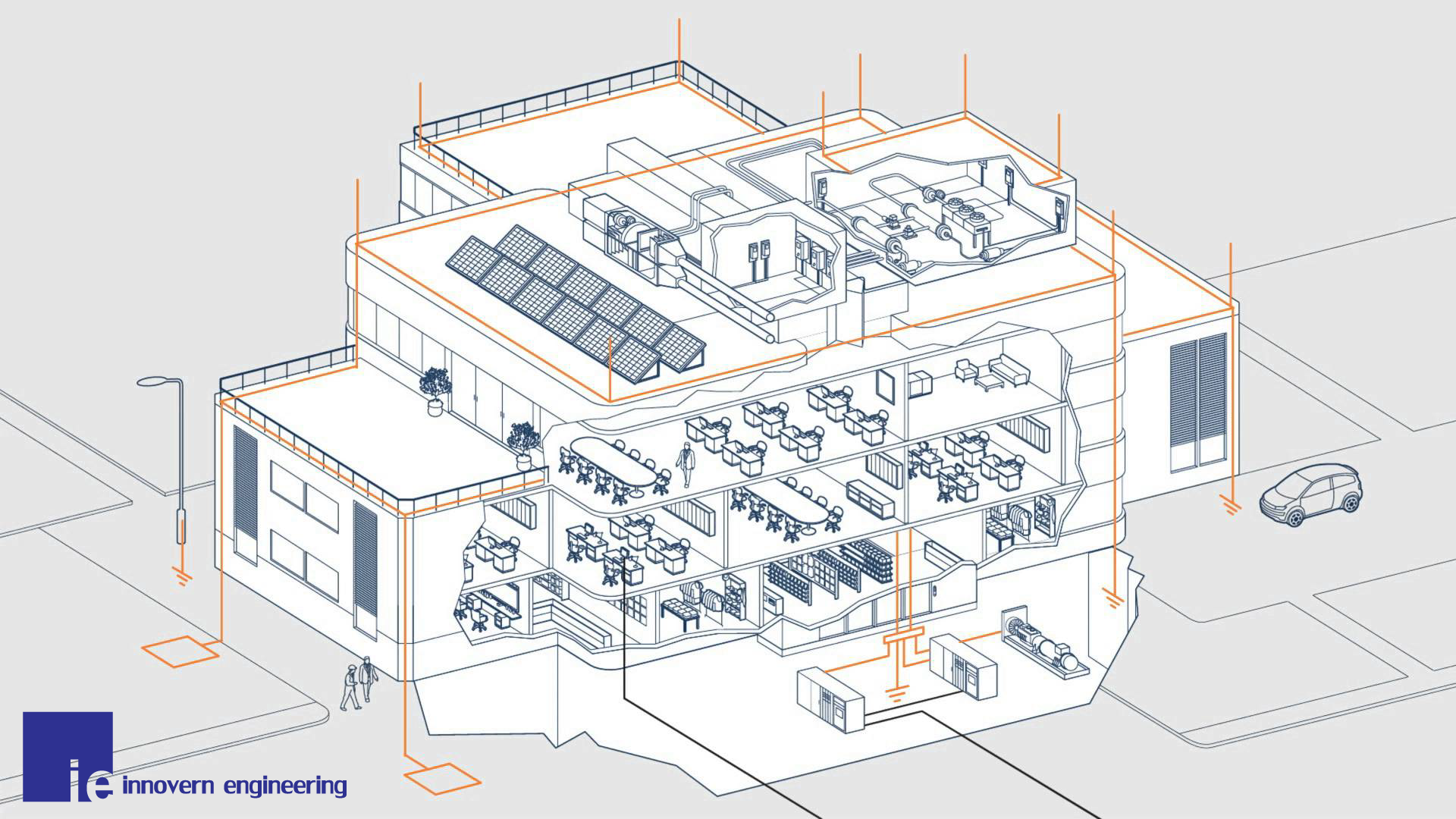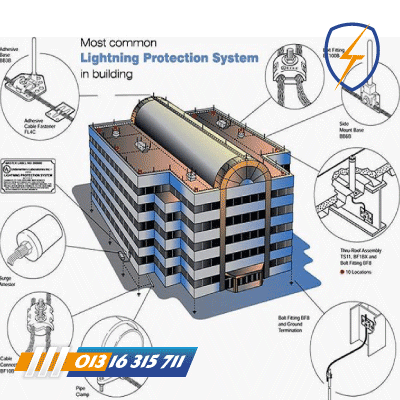Why Adhering to Lightning Protection Standards is Critical for Bangladesh
Bangladesh faces one of the world’s most severe lightning threats, particularly during the pre-monsoon and monsoon seasons. With thousands of strikes recorded annually, lightning is not just a natural phenomenon; it’s a major cause of casualties, property damage, and power grid disruption. Standard of lightning protection system is necessary because lightning can harm people by causing injuries and death. It can also badly damage the structures, building, power grid & telecommunication towers etc.
The solution to mitigating this escalating risk lies in strict adherence to global engineering principles. For every new high-rise, factory, and critical infrastructure project, implementing Lightning Protection Standards in Bangladesh—specifically the BNBC should align with the international guidelines like IEC 62305 and NFPA 780—is absolutely vital for safety and economic stability.
Why Standard is mandatory for Lightning Protection?
Standard is a well-organized set of rules which helps for Risk Assessment, Design, Materials selection, Installation, and Maintenance of the lightning protection system. If you follow the standard anyone can assess the system with respective standard. While anyone ignore the minimum standard requirement the it could easy to identify and rectify the non-compliance issue.
1. Protecting Human Life (The Primary Mandate)
The core reason lightning protection is mandatory is to prevent injury and loss of life. A lightning strike involves millions of volts and thousands of amperes, making it instantly lethal to anyone nearby.1
-
Managed Energy Dissipation: Standards define the complete pathway, from interception (air terminals) to dissipation (earthing system), ensuring the massive lightning current is safely channeled away from occupants.
-
Eliminating Step and Touch Voltages: The standards mandate extremely low Earthing Resistance (typically 3$< 10\ \Omega$).4 This requirement is critical because it ensures the energy dissipates rapidly, preventing dangerous voltage gradients in the ground or on conductive surfaces that could electrocute people or animals.
-
Preventing Fires: By controlling the path and ensuring adequate conductor size (e.g., minimum $50 \text{ mm}^2$ copper), standards prevent the conductors from heating up or exploding, thus mitigating the catastrophic risk of fire.
2. Ensuring Engineering Certainty and Effectiveness
Without a universally accepted standard, every installation would be a guess, leading to systems that are either inadequate or incorrectly installed. Standards enforce scientific methodology.
-
Risk Assessment is Mandatory: Standards require a scientific Risk Assessment (IEC 62305-2) to determine the necessary Lightning Protection Level (LPL) (I to IV).5 This ensures the protection is specifically matched to the threat level, structure type, and local lightning density.
-
Standardized Design: Methods like the Rolling Sphere Method are mandatory design tools.6 This technique scientifically proves that every vulnerable part of the structure is within the protection zone of the lightning rods, eliminating gaps.
-
Quality Control (Materials and Installation): Standards strictly dictate material specifications (e.g., minimum conductor size, corrosion-resistant metals) and installation rules (e.g., bonding, minimum bend radius).7 This prevents system failure due to poor quality materials or improper routing when a strike occurs.
3. Legal, Insurance, and Business Continuity Requirements
Adherence to standards is often a legal and financial prerequisite for operation, especially for critical facilities.
-
Statutory Compliance: For critical infrastructure (hospitals, power plants, telecom hubs, data centers), compliance is often written into building codes and local regulations. Failure to comply can result in fines, project halts, or criminal negligence charges in the event of a casualty.
-
Insurance and Liability: Most commercial and industrial insurance policies require the property to be compliant with recognized LPS standards.10 If a lightning strike causes damage and the system is found non-compliant, the insurer may void or significantly reduce the claim payout, leaving the asset owner fully liable for the losses.
-
Protecting Sensitive Assets: Standards mandate the installation of Surge Protective Devices (SPDs) in coordinated layers (Type 1, 2, and 3).11 This is mandatory because it protects sensitive electronic equipment from the electromagnetic pulse (EMP) generated by nearby strikes, which is the most common cause of equipment damage and resulting operational downtime.
In short, lightning protection standards transition defense from a simple accessory to a certified, engineered safety system required for public trust, legal protection, and business function.





Leave a Reply